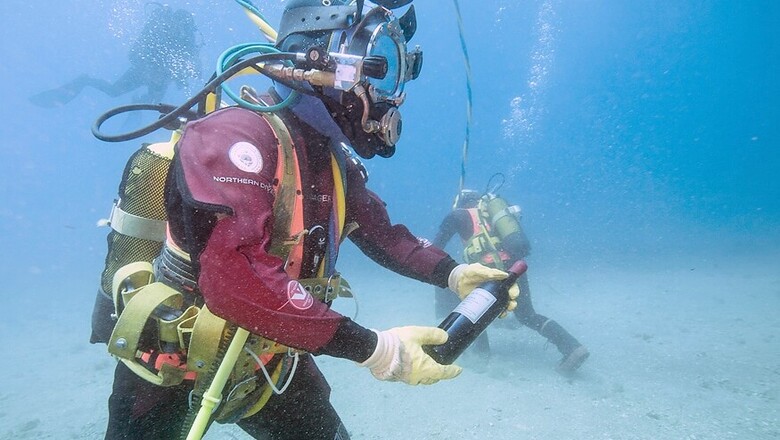
views
Divers scavenging in shipwrecks slumbering at the bottom of the North Sea since World War II were disappointed not to find dazzling troves of gold and jewels. As consolation, not only did they turn up decades-old wine, but the wine came with a bonus: it was better than equivalent vintages selling for top dollar in luxury caves.
Among the latest to test the benefits of a deep soak are Bandol winemakers in southern France who teamed up with a dive school for a year-long experiment. Choosing a tranquil section of a marine park off the Riviera, they submerged 120 bottles of Bandol wine to a depth of 40 meters (130 feet), leaving them there for a year. Another 120 bottles were kept in a cellar for comparison purposes.
"It's important not just to live long but to live well," said Guillaume Tari, head of the regional wine association, Vins de Bandol. Submersion in deep waters "preserves the acidity because there's not much light, there's absolutely no air, it's relatively cool and the temperature is constant," he added. The underwater conditions -- total darkness and constant temperature -- are thought to initially accelerate the ageing process, adding complexity to the wine. Over longer periods, the ageing process slows or stops altogether, making underwater storage excellent for conservation and explaining why shipwreck wine emerges so well.
Master sommelier Gisele Marguin took part in a blind tasting, comparing the underwater Bandols with the same wines stored in a traditional cave. The underwater Bandol had "a nice texture in the mouth, a good structure, and notes of very ripe dark fruit... even chocolatey," she said.
However its "secondary aromas are not sufficiently present" -- suggesting that the wine would benefit from more time with Davy Jones. "It's a wine of the future. I think that this only can be done with great vintages. It wouldn't be much use to submerge wines with a less promising future," she said. The results of similar experimentation elsewhere in France -- in western Brittany and in the southwest -- remain largely confidential. But Philippe Faure-Brac, who was named the world's best sommelier in 1992, recalled: "Twenty years ago we had the privilege of tasting bottles of white -- Sancerre and Pouilly -- off the coast of Noirmoutier (western France) that were placed in oyster beds" for a few months. They were exceptional bottles in their complexity and conservation".
The approach can be used with reds, whites and roses, but Tari said red wines are especially enhanced by long submersion, calling the result "the must of musts". Faure-Brac noted that the technique costs more for the winemaker because of the extra time and logistics required. "Lots of winemakers talk about it," he said. "People in the spirits trade are also thinking about experimenting with cognacs and rums."
So far underwater wines have not gone to market. But Tari is optimistic, saying, "Obviously if you can gain one or two decades (on the ageing process), it could be worth it.”



















Comments
0 comment